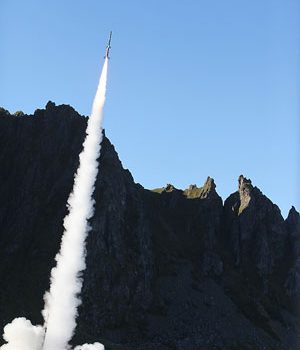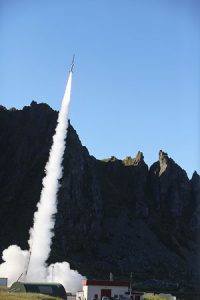
On September 28, the Australian Defence Science and Technology Organisation (DSTO) made a successful hypersonic test flight at Norway’s Andoya Rocket Range. The test vehicle reached a top speed of Mach 8, achieving an apogee of 350 km. A flight is only designated hypersonic when it exceeds Mach 5.
“All sensor and telemetry systems worked perfectly,” reported DSTO. Details of the test vehicle have not been released. The suborbital flight was powered by a Brazilian VS-30/Orion two stage sounding rocket.
The flight is one in a series intended to collect fundamental data about hypersonic flight design requirements. It is part of the Hypersonic International Flight Research Experimentation (HiFiRE), a joint program of the US Air Force Research Laboratory and the DSTO. The collaboration had already produced several successful test flights under the six year $54 million program.
The HiFiRE success comes a few weeks after the high profile failure of the US Air Force’s own hypersonic attempt, the Boeing WaveRider X-51A. The WaveRider, so called because its scramjet engine is designed to ride its own shockwave, is dropped from a B-52 bomber. The craft is supposed to be accelerated to Mach 4.5 by a rocket booster before the scramjet kicks in, accelerating the plane to about Mach 6. The first WaveRider test flight in 2010 reached Mach 5. The two subsequent tests failed and the vessels were lost. One WaveRider prototype remains, although a fourth test flight has not been announced.
Four more hypersonic flights are scheduled under the HiFiRE program. Friday’s flight was the fifth in the series.
Below, the August 14 WaveRider flight:


















































































































![A trajectory analysis that used a computational fluid dynamics approach to determine the likely position and velocity histories of the foam (Credits: NASA Ref [1] p61).](https://www.spacesafetymagazine.com/wp-content/uploads/2014/05/fluid-dynamics-trajectory-analysis-50x50.jpg)



Leave a Reply